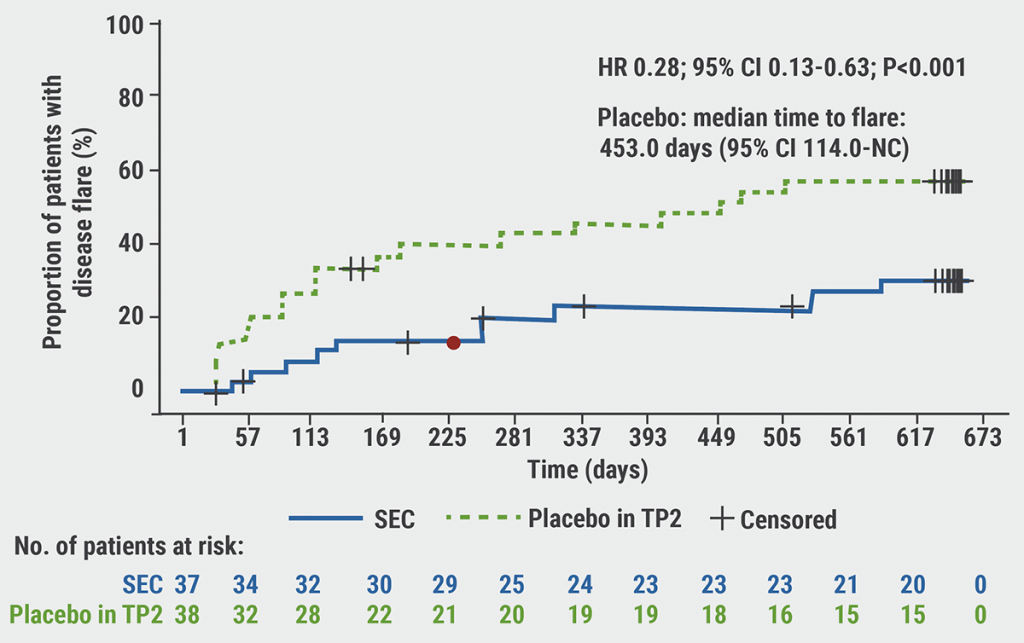The study presented by Dr Allesia Alunno (University of L'Aquila, Italy) evaluated COVID-19 severity, breakthrough infections, vaccine-related adverse events (AE), and post-vaccine flares in young patients aged 18 to 35. Data pertaining to the years 2021 and 2022 was collected from the international COVID-19 Vaccination in autoimmune diseases (COVAD) 1 and 2 questionnaires.
Included were 6,010 responders, among them 1,692 with RMDs, 400 nrAD, and 3,918 HC. The disease groups cohort consisted mainly of women at a rate over 80%, while the proportion was lower in the HC (64%). At least 2 vaccinations were administered to 75–83% of the cohort. The disease duration was around 7 years. “We observed that over 90% of patients with RMDs and only 20% with nrAD were exposed to immunosuppressants before vaccination,” Dr Alunno described.
Overall 24–28% of the study cohort ever tested positive for SARS-CoV-2 infection. The infections were nearly always symptomatic, but hospitalisation, oxygen need, or intensive care admission was rarely necessary. Looking at the likelihood of being infected pre- or post-vaccination, the results among the groups differed. Pre-vaccine infections were less frequent in patients with RMDs versus HC (OR 0.6; 95% CI 0.4–0.9) but similar in nrAD compared with HC. “This can be easily attributed to the straight shielding in people receiving immunosuppressants in the early phases of the pandemic,” Dr Alluno commented. In contrast, after vaccination, patients with RMDs were nearly 3 times more likely to be infected than HC (OR 2.7; 95% CI 2.1–3.5).
In terms of clinical manifestations, RMD patients were more prone to arthritis than HC, independent of the time of infection. Flares were self-reported post-infection by 5% (RMD) and 1.5% (nrAD) and post-vaccination by 10% and 7%, respectively. Of note, only 41% (RMD) and 27% (nrAD) of these prompted a change in dose or type of medication.
The likelihood for early mild AE after 1 or 2 vaccine doses was about twice as high for both disease groups compared with HC (OR 2.4; 95% CI 2.0-3.1 for RMDs and OR 2.0; 95% CI 1.4.2.9 for nrAD). Differences between groups for late, mild, or severe AE were not significant after any number of vaccine doses.
- Alunno A, et al. COVID-19 severity, breakthrough infections and anti-SARS-COV-2 vaccine safety in young people with rheumatic and non-rheumatic autoimmune diseases: results from the COVAD1 and COVAD2 projects. LB0006, EULAR 2023, 31 May–3 June, Milan, Italy.
Copyright ©2023 Medicom Medical Publishers
Posted on
Previous Article
« Deep learning AI model reliably predicts progression to early RA Next Article
PsA therapy with bimekizumab: a high proportion of participants upholds 1-year response »
« Deep learning AI model reliably predicts progression to early RA Next Article
PsA therapy with bimekizumab: a high proportion of participants upholds 1-year response »
Related Articles

February 4, 2020
Filgotinib promising in RA patients naïve to methotrexate

© 2024 Medicom Medical Publishers. All rights reserved. Terms and Conditions | Privacy Policy

